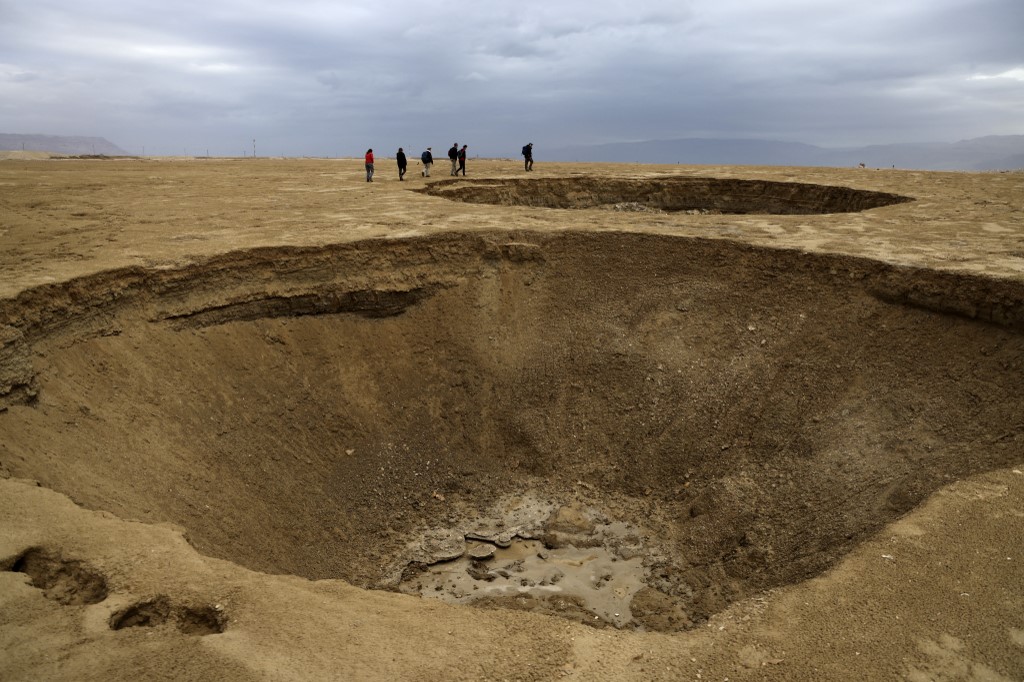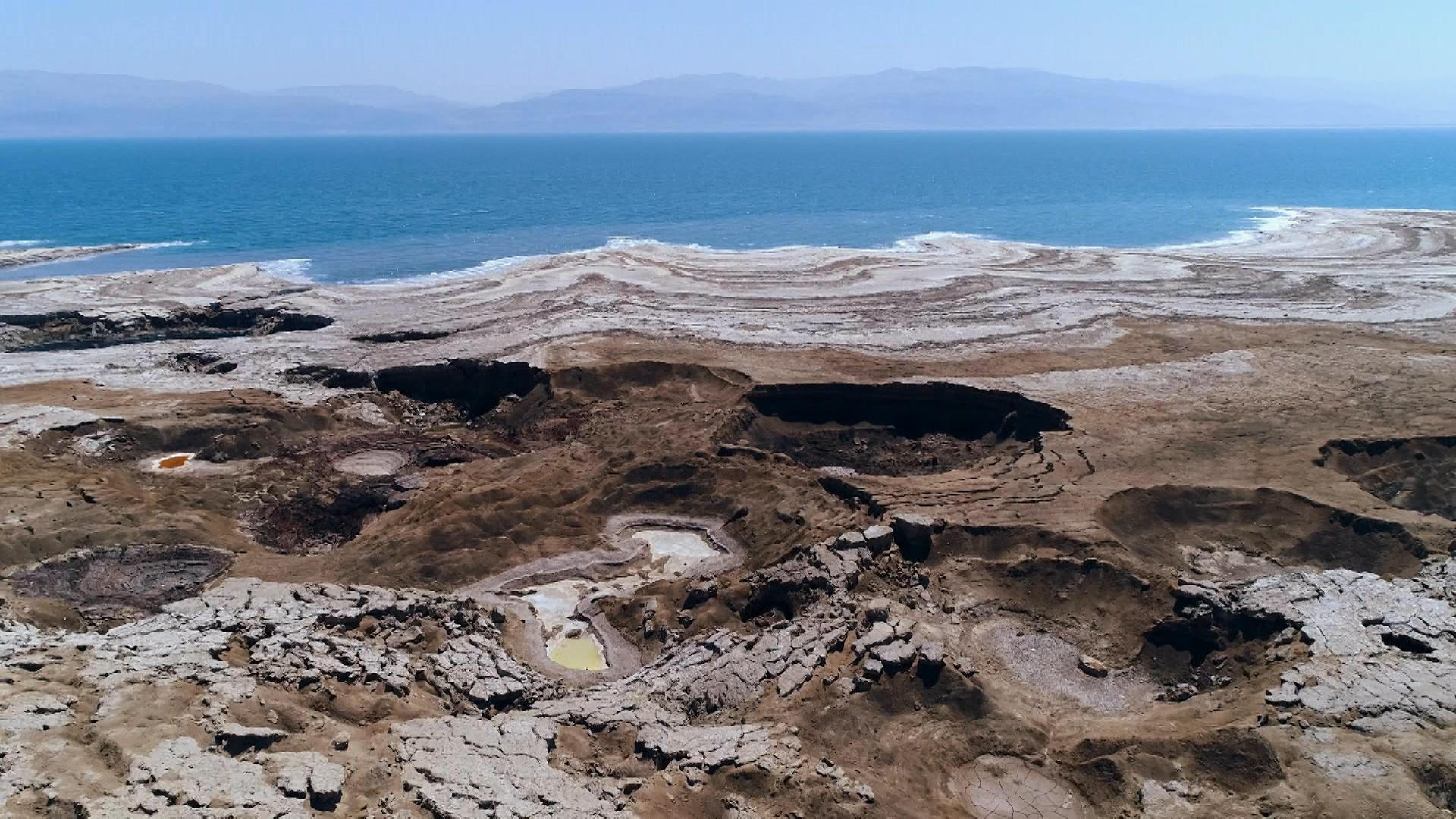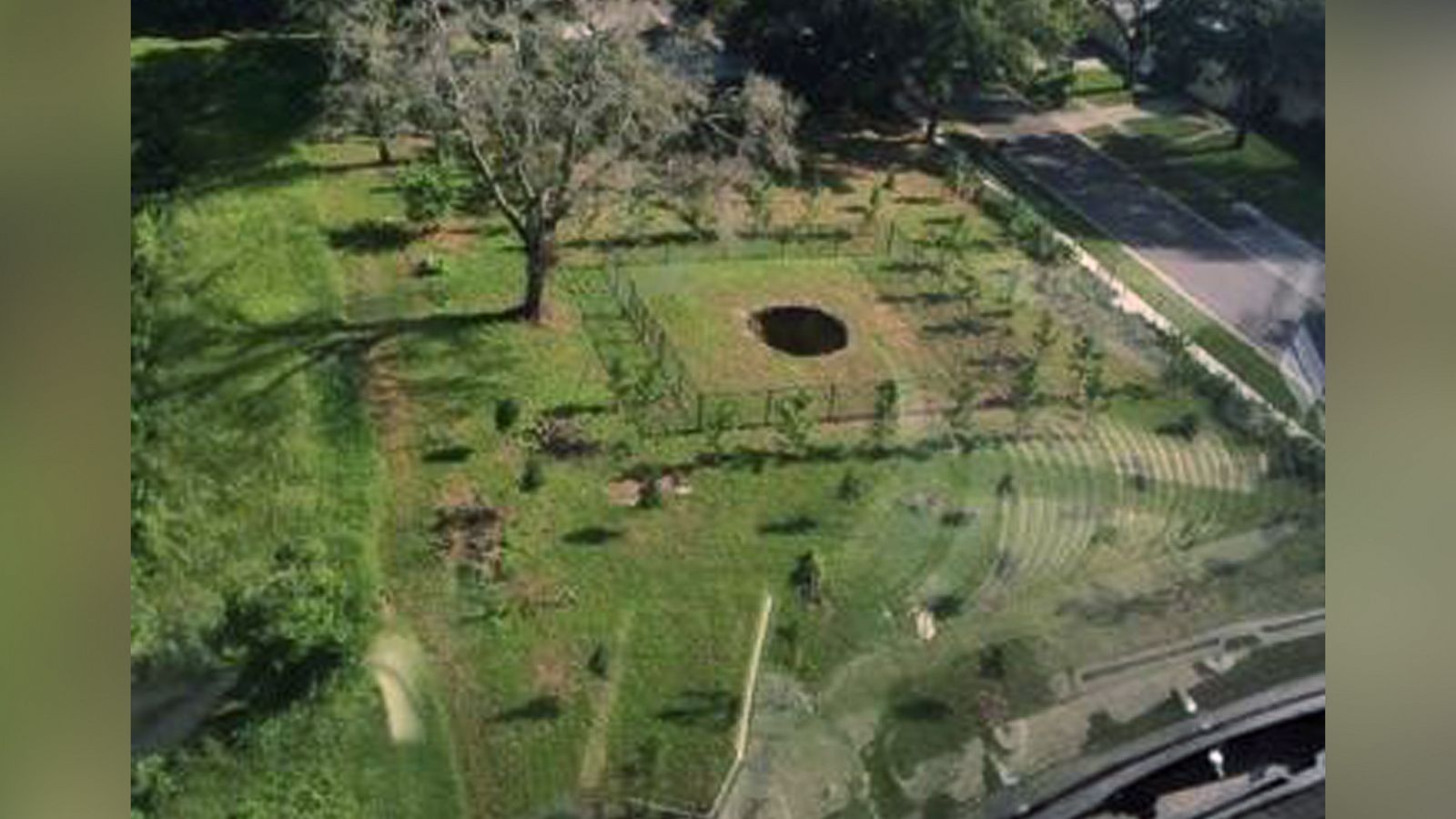Topic sinkhole dead sea: Discover the intriguing world of the Sinkhole Dead Sea: a breathtaking natural phenomenon reshaping the landscape and sparking curiosity among scientists and adventurers alike.
Table of Content
- What causes the formation of sinkholes at the Dead Sea?
- Understanding Sinkholes Near the Dead Sea
- Causes and Impacts
- Conservation Efforts and Future Perspectives
- Exploring the Beauty and Challenges
- Conclusion
- YOUTUBE: The Death of the Dead Sea: Sinkholes Tour and Drone Footage
- Introduction to the Dead Sea Sinkholes Phenomenon
- Understanding the Causes Behind Sinkhole Formation
- Impact of Sinkholes on the Environment and Local Communities
- Scientific Research and Monitoring Efforts
What causes the formation of sinkholes at the Dead Sea?
Sinkholes at the Dead Sea are formed due to a combination of natural and human-induced factors:
The lowering of the Dead Sea water level: The primary cause of the sinkholes is the rapid decrease in the water level of the Dead Sea. As the water recedes, it leaves behind salt deposits that were previously underwater.
Underground salt formations: The Dead Sea region is rich in salt deposits, particularly halite, which is a type of mineral salt. When the water recedes, these salt deposits become exposed and are vulnerable to dissolution by underground freshwater sources.
Subsurface cavities: As the salt deposits dissolve, they create empty spaces underground, leading to the formation of cavities. Over time, the weight of the overlying land mass can cause these cavities to collapse, resulting in the formation of sinkholes.
Human activities: Human activities such as mineral extraction, canal construction, and the diversion of freshwater sources can also exacerbate the formation of sinkholes by altering the natural water flow patterns and increasing the rate of salt dissolution.
READ MORE:
Understanding Sinkholes Near the Dead Sea
Sinkholes around the Dead Sea have been observed since the 1970s, but their frequency has significantly increased in recent years. There are now over 5500 documented sinkholes, primarily on the western shores of the Dead Sea. These geological features can be quite large, with some reaching up to 40 meters (131 feet) in diameter and 25 meters (82 feet) in depth. The formation of these sinkholes is largely attributed to human activities, such as water diversion and mineral extraction, leading to a decrease in the Dead Sea"s water level and the dissolution of underground salt layers.

Causes and Impacts
The primary cause behind the formation of sinkholes is the significant reduction of water inflow from the Jordan River, compounded by mineral mining activities. This has led to a decrease in the Dead Sea"s water level by approximately 1 meter (3 feet) annually. The resulting underground cavities eventually collapse, forming sinkholes. This phenomenon not only poses risks to human safety and infrastructure but also impacts the region"s biodiversity and tourism industry.
Conservation Efforts and Future Perspectives
Efforts to mitigate the sinkhole phenomenon include proposals such as the construction of a canal from the Red Sea to the Dead Sea to restore water levels. However, this solution faces ecological, economic, and political challenges. Conservationists and researchers emphasize the need for careful consideration of the potential impacts on the Dead Sea"s unique mineral composition and ecosystem before proceeding with such interventions.

Exploring the Beauty and Challenges
Despite the challenges posed by sinkholes, the Dead Sea region continues to attract visitors interested in its beauty, history, and geological features. Tours offer insights into the area"s geology, including the opportunity to view the sinkholes up close, highlighting the dynamic interplay between natural beauty and environmental challenges.
Conclusion
The phenomenon of sinkholes at the Dead Sea is a reminder of the delicate balance between natural wonders and human impact. While the situation presents significant challenges, it also offers opportunities for scientific research, conservation efforts, and sustainable tourism practices aimed at preserving this unique natural heritage for future generations.
- Characteristics of the Dead Sea sinkholes
- Human impact and the formation of sinkholes
- Conservation efforts and challenges
- The beauty amidst adversity
The Dead Sea"s sinkholes are a testament to the resilience of nature and the importance of human stewardship in preserving our planet"s treasures.

The Death of the Dead Sea: Sinkholes Tour and Drone Footage
Sinkholes: \"Discover the mysterious world of sinkholes in this fascinating video, showcasing the powerful forces of nature and how they shape our planet. Watch as experts unravel the secrets hidden beneath our feet.\" Dead Sea: \"Immerse yourself in the stunning beauty of the Dead Sea with this captivating video. Explore the unique landscape, float effortlessly in its mineral-rich waters, and learn about the legendary healing properties it holds.\"
Thousands of sinkholes emerge as the Dead Sea continues to recede
Subscribe to our YouTube channel for free here: https://sc.mp/subscribe-youtube The receding of the Dead Sea has caused ...
Introduction to the Dead Sea Sinkholes Phenomenon
The Dead Sea, recognized for its extraordinary characteristics as the lowest point on Earth, is undergoing a significant environmental challenge. Known for its high salinity, unique mineral-rich waters, and therapeutic mud, this iconic location attracts tourists globally for its health benefits, serene beauty, and historical sites like Masada and the Ein Gedi nature reserve. However, a newer phenomenon poses a threat to this natural wonder: the emergence of sinkholes.
Sinkholes around the Dead Sea have become increasingly prevalent, particularly since the 1970s, with over 5500 now dotting the landscape, mostly on the western shores. These geological occurrences, which can span up to 40 meters in diameter and reach depths of 25 meters, result from a combination of natural processes and human activities. Notably, the diversion of water from the Jordan River and mineral extraction activities have significantly reduced the sea"s water levels, facilitating the dissolution of underground salt layers by fresh groundwater and leading to the eventual collapse of the surface above.
This phenomenon not only disrupts the natural landscape but also poses significant risks to infrastructure, tourism, and local livelihoods, with affected areas often becoming fenced off for safety. The urgency to address the sinkholes" expansion has led to proposals such as the construction of a canal from the Red Sea to replenish the Dead Sea"s water levels and prevent further sinkhole formation. This solution, while ambitious, highlights the critical need for immediate action to preserve the Dead Sea"s unique environment and ensure its continued attraction and safety for visitors and residents alike.
Understanding the Causes Behind Sinkhole Formation
The Dead Sea, a unique and highly saline lake, has recently become known for the alarming spread of sinkholes along its shores. These geological phenomena, which began to appear more frequently in the 1970s, have escalated in both size and number due to human activities and natural processes.
Characteristics of Dead Sea Sinkholes
Sinkholes around the Dead Sea have been forming at an increasing rate, with over 5500 recorded instances, primarily on its western shores. These sinkholes can be massive, reaching diameters of up to 40 meters (131 feet) and depths of about 25 meters (82 feet), sometimes merging to form even larger cavities.
Formation Process
The creation of these sinkholes is largely attributed to human intervention, particularly the diversion of water from the Jordan River and the extensive mining of minerals. These activities have significantly reduced the inflow of water to the Dead Sea, causing its surface level to recede at an alarming rate of about 1 meter (3 feet) per year. This recession leads to the upwelling of fresh groundwater, which then dissolves the underground salt layers, creating voids that eventually collapse to form sinkholes.
Potential Solutions
Efforts to address and potentially reverse the sinkhole phenomenon include proposals such as constructing a canal from the Red Sea to the Dead Sea to replenish its water levels and halt the formation of new sinkholes. However, the implementation of such solutions remains a challenge, and the rapid increase in sinkhole occurrences continues to threaten the area"s safety, tourism, and natural beauty.

Impact of Sinkholes on the Environment and Local Communities
The sinkholes emerging around the Dead Sea have profound impacts on both the environment and local communities. These geological phenomena, primarily caused by the rapid decline in the Dead Sea"s water levels, threaten infrastructure, agriculture, tourism, and the natural beauty of the region.
- Environmental Impact: Sinkholes disrupt the natural landscape, leading to loss of flora and potentially altering habitats for local fauna. The dissolution processes that create these sinkholes can change the chemical composition of the soil, affecting plant life and freshwater sources in the vicinity.
- Impact on Local Communities: For inhabitants near the Dead Sea, sinkholes pose a direct threat to their homes and livelihoods. Agricultural lands, once fertile and productive, are increasingly being swallowed up by these expanding cavities, leading to economic losses and displacement of communities.
- Infrastructure and Tourism: Roads, buildings, and recreational areas are also at risk, with some areas becoming too dangerous for habitation or visitation. The aesthetic beauty and unique environmental characteristics of the Dead Sea attract tourists from around the world, and the proliferation of sinkholes jeopardizes this important source of revenue.
- Research and Monitoring: Efforts to understand and mitigate the impact of sinkholes include geophysical and remote sensing techniques to monitor changes and predict future occurrences. These studies aim to provide early warning scenarios to prevent damage and ensure the safety of the affected areas.
The challenges posed by sinkholes at the Dead Sea call for a coordinated approach to environmental management and community support. While the aesthetic beauty of the sinkholes is undeniable, their destructive force highlights the urgent need for sustainable solutions to preserve this unique landscape for future generations.
READ MORE:
Scientific Research and Monitoring Efforts
Scientific efforts to understand and mitigate the formation of sinkholes around the Dead Sea have advanced significantly in recent years, leveraging a range of modern technologies and interdisciplinary research. These efforts aim to provide early warnings of potential sinkhole formations, understand the underlying causes, and develop strategies for managing the impact on the environment and local communities.
Technological Advancements in Sinkhole Monitoring
Researchers have employed Interferometric Synthetic Aperture Radar (InSAR) and Light Detection and Ranging (LiDAR) technologies to detect precursory subsidence that precedes sinkhole collapses. This innovative approach allows for the identification of minute land surface changes, offering crucial early warnings for areas at risk. Over six years of systematic observation have enabled the creation of detailed subsidence maps, crucial for planning and infrastructure development in the region.
Collaborative Research Initiatives
Collaborative efforts between geological surveys, universities, and international research teams have been instrumental in advancing our understanding of sinkhole phenomena. These partnerships have facilitated comprehensive studies on the Dead Sea"s unique geological environment, leading to improved predictive models for sinkhole formation and progression.
Case Studies and Impact Assessment
Several case studies illustrate the effectiveness of monitoring technologies and methodologies in predicting sinkhole formation. By integrating InSAR data with LiDAR measurements and field observations, researchers have successfully mapped zones susceptible to future sinkholes, providing valuable insights for environmental management and infrastructure planning.
Publications and Knowledge Sharing
The findings from these scientific endeavors have been widely published in peer-reviewed journals, contributing significantly to the global understanding of sinkhole dynamics. This body of work not only aids in local decision-making processes but also enriches the international scientific community"s knowledge, fostering further research and innovation in the field.
Future Directions
Looking ahead, the ongoing research aims to refine predictive models and monitoring techniques, enhance collaboration across scientific disciplines, and explore new technologies for sinkhole detection and prevention. The ultimate goal is to develop sustainable management practices that can mitigate the adverse effects of sinkholes on the environment and human activities, ensuring the safety and preservation of the Dead Sea region.


